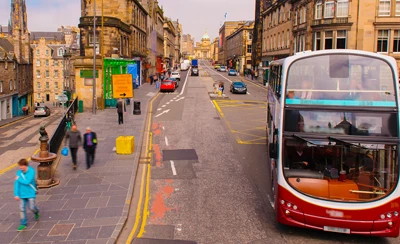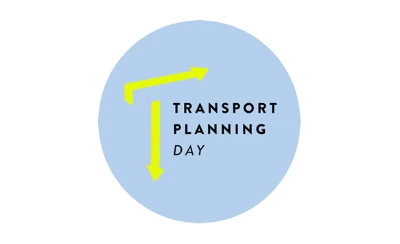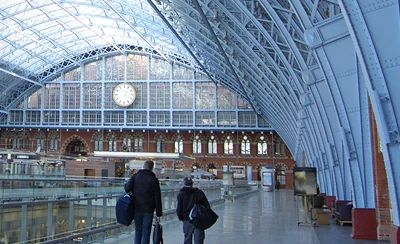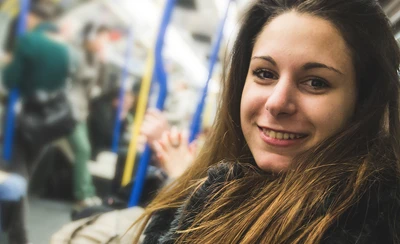A Transport Planning Day 2024 blog
Shaping the Future of Transport: A Conversation with Natalie Gravett-Foyn, Arup
In the world of transport planning, the journey is as crucial as the destination.
In advance of this year’s Transport Planning Day, the TPS’ Director of Communications, Georgia Corr, sat down with Natalie Gravett-Foyn, a multimodal transport planner at Arup, and a passionate advocate for sustainable and community-centered transport solutions, to learn more about her career, ongoing projects, and her vision for a future where cities are designed around people, not cars.
Natalie, could you tell us a bit about your background and how you found your way into transport planning?
My journey into transport planning began with a degree in Geography at the University of Exeter, where I developed a fascination for GIS (Geographic Information Systems) and transport systems. During my studies, I interned at smaller transport planning firms, where I got my first hands-on experience in the field. Later, I completed a Master’s in Sweden and interned at AIMSUN, working with transport modeling. This set the foundation for my career in transport planning, which eventually led me to Arup.
As a multimodal transport planner, my focus is on creating transportation systems that serve all users—pedestrians, cyclists, public transit riders, and drivers. My work at Arup spans several areas: from active travel to spatial movement planning for cities, to developing business cases that promote sustainable transport. An essential part of my role involves participatory and co-design approaches, where we engage the communities directly in planning processes, making sure their voices shape the projects that ultimately impact them.
Could you share some highlights from projects you’re working on at Arup?
One memorable project was our work on the Commonwealth Games in Birmingham. We undertook micro-simulation modeling and logistics planning to ensure that transport systems could handle the massive influx of visitors. I’m also deeply involved in an Active Travel Social Prescribing Pilot, where we work closely with the health sector and parks teams to integrate active travel as part of healthcare. Another major focus has been supporting Local Transport Plans that prioritise mode shift and decarbonisation—essential steps towards reducing car dependency.
In addition to your projects at Arup, you’ve been seconded to the Leeds Council. Could you tell us about your role there?
I joined the Influencing Travel Behavior Team at Leeds Council, where we aim to encourage sustainable travel behaviors across the city. We focus on initiatives like school streets, where we create safer environments for children by reducing vehicle traffic around schools. It’s part of an ambitious vision to make Leeds a place where you don’t need a car to live comfortably. The challenges are real, but it’s rewarding to work on projects that genuinely influence daily habits and city dynamics.
What would you say are some of the key challenges in achieving ambitious transport goals?
One of the biggest challenges is communication. Creating a clear, ambitious narrative around sustainable transport is essential if we want to inspire communities and gain political buy-in. Equally important is the infrastructure—timely, reliable public transport can drive a shift in behavior, but it needs to be backed by robust time-tabling and accessible routes. Finally, there’s the challenge of engagement. We’ve learned that engaging communities directly and making active travel fun and appealing are crucial for success. If you make it attractive, people are more likely to embrace it.
This year’s transport planning day topic focuses on how we can reduce car use in the UK. What policies or strategies do you believe are key to reducing car dependency in cities?
Reducing car use requires a combination of effective policies and accessible alternatives. For example, implementing workplace parking levies can discourage solo car travel to work, and improved car clubs and bike-sharing schemes can make sustainable choices convenient, especially for young professionals. It’s about setting realistic, politically feasible goals that can yield quick wins.
TP Day also presents a unique opportunity to engage the public and highlight sustainable transport initiatives, over the car. One of the ways to do this is creating policies that foster local activation and encouraging community involvement. The goal is to create events that are not only informative but also enjoyable and engaging.
Engaging people in spaces they already love and creating transport options that add to the vibrancy of these areas, like the Stockport Interchange, or Sheffield’s Grey to green project, can really shift perceptions. After all, transport planning should reflect the communities it serves, so it’s important for people to feel they have a stake in these initiatives.
Any advice for transport planners looking to create engaging, sustainable transport solutions?
Engagement is everything. Bringing communities into familiar, comfortable spaces is the best way to inspire change. And don’t be afraid to make it fun! The future of transport planning isn’t just about infrastructure; it’s about creating spaces people want to be in. If we can make sustainable transport attractive and enjoyable, we’re halfway there.








